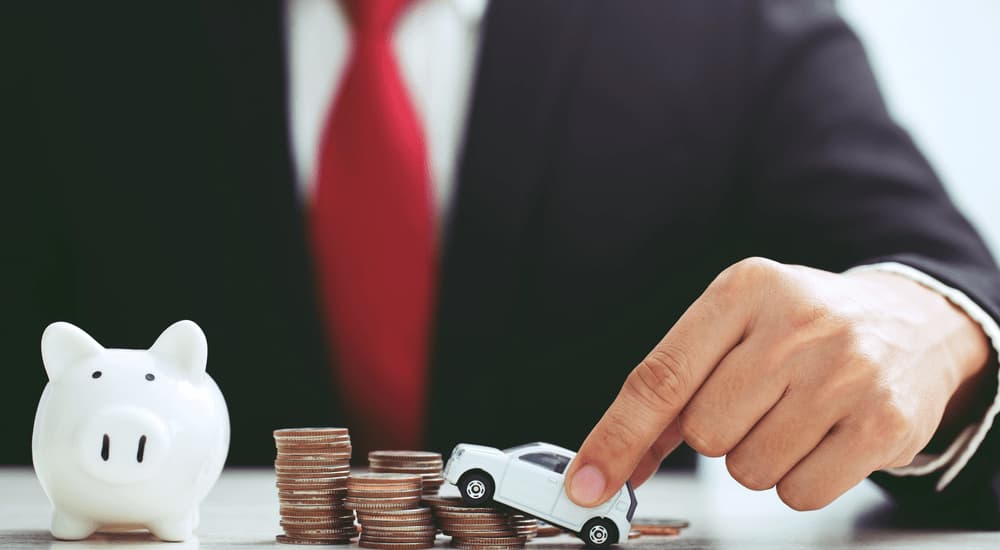Bankruptcy can (and does) happen to anyone. Whether you have to file bankruptcy because of a business deal or investment gone wrong, or you lost your job and can’t keep up with mortgage payments, credit card bills, and the like, you might decide to declare bankruptcy. This choice has its pros and cons, but bankruptcy is kept on your record for six years by the credit bureaus. While declaring bankruptcy prevents you from having to pay a large amount of debt, it also makes it next to impossible to get a loan from a financial institution. If you’re making enough money to support yourself, however, there are ways to keep your vehicle or even purchase a new one––it just takes a little maneuvering, budgeting, and research.
Bankruptcy auto loans have happened. Being able to retain a vehicle makes a world of difference for most people––having a car can be critical to getting the good job you need to turn things around since you no longer have to rely on public transit, walking, or biking. It’s more convenient, allowing you to be on time for appointments, classes, work, or meetings, as well as providing an option for transportation if you need to run errands, want to go on a road trip, or are moving to another place.

Keeping Your Car While Declaring Bankruptcy
Even if you’re under the pressure of debt, not all is lost. Declaring bankruptcy only applies to unsecured debts, such as government debt, student loans, credit card bills, and payday loans. Secured debt, like mortgages and car loans, are not counted in bankruptcy because there’s collateral involved––if you don’t pay your mortgage or car loan, those you owe can take the house or the car back and thereby recoup at least some of the money they’ve lent you.
Depending on if you have retained a job that can pay your bills, you could keep your car, even while the bankruptcy is added to your records. If you have enough money to cover the monthly bill, there’s nothing else that needs to be done. Keep making on-time payments, and you’ll be in the clear. Of course, if you don’t have the money to spare, you might have to give up the vehicle to ensure that you don’t fall deeper into debt. If you’re struggling to make payments, consider asking if you can trade your vehicle in for a lower-priced used car, which can lower your payments.
You can also try to trade your vehicle in and save the cash, adding to it whenever you can so that when you’re ready to purchase another vehicle, your down payment is as large as possible. If you are considering taking out another loan, please do so with caution. You can ask for a loan with a shorter term, talk to the lender about the minimum and maximum payment amounts, ask for a flexible payment date, or request information about the programs or specials they have. It never hurts to ask, but do be wary of adding more debt to your pile.
Purchasing a Vehicle While Bankrupt
If you haven’t got two loonies to rub together, you may have to wait a while before you’re taken seriously by lenders. Bankruptcy will show up on your credit report, so the best thing you can do is to prepare, do your research, and budget so that you’re able to save up for a downpayment, make monthly payments, and keep your car running with regular maintenance visits.
Because bankruptcy only concerns unsecured debt, you can go about securing a loan for a vehicle. Still, it is best to save up enough of a down payment that your monthly payments will be low, whatever you can afford. By saving and budgeting, you show that you are capable of making payments without falling behind. While banks are averse to taking risks and might not consider offering you a loan after bankruptcy, it doesn’t hurt to show them that you are taking steps to move forward in a smart way, financially speaking.
Other options to consider include buying a used car, watching for sales, speaking to sales representatives about what specials the dealership might run in the near future, and things of that sort. Don’t be afraid to talk to people. Bankruptcy is a choice many must make, and it doesn’t mean you’re a bad person. It can happen to anyone, from the richest man in the world to someone who fell behind on their mortgage payments and got kicked out of their house because a family member got sick.
The bottom line is this: if you can afford a monthly payment and a semi-regular appointment for maintenance, it’s likely you’ll be able to find a vehicle in your price range that you can take home.

What to Expect in Terms of Pricing and Payments
On average, a new car will run you $45,000 CAD, but there are much less expensive options, and used cars will be less expensive still. Of course, this does depend upon which province or territory you’re living in and what dealers have available in their inventories. Whether you’re looking at a Toyota Corolla, Honda Civic, Ford F-150, or Jeep Wrangler, you’ll need to be aware of the cost and how it breaks down depending on how much of a down payment you have available, how old the car is, and how high in demand it is. These will all determine pricing and monthly payment amounts.
Buying a new car will cost you, on average, several hundred dollars a month. A larger down payment will lower these monthly rates and allow you to take care of your car better so that it will last longer. Knowing the financial aspects of the purchase will help you ask the right questions to see if a vehicle is a good fit for you, from its price to its seating arrangements. Do your research, go to the dealership prepared, and you’ll be able to see what you can afford without the added stress of wondering if you really can afford it or if it’ll get taken away when you can no longer make the payments on time.
Don’t Lose Hope
No matter where you are in the bankruptcy process, you can keep your vehicle as long as you keep up with monthly payments. You can also buy a new car, get a car loan, and do everything else that comes with car ownership without having to wait six years until the credit bureau lifts your bankruptcy details from reports. You don’t have to go through life without a vehicle, nor do you have to rely on others to transport you. Read the fine print, ask lots of questions, and be prepared to answer questions as well. People need to know that you are reliable, can be trusted with this kind of responsibility, and are on your way toward a better financial future, one step at a time. It really helps to show your work, and by showing up, you’ll prove to yourself and others that just because you had to declare bankruptcy doesn’t mean you don’t deserve a better quality of life.



